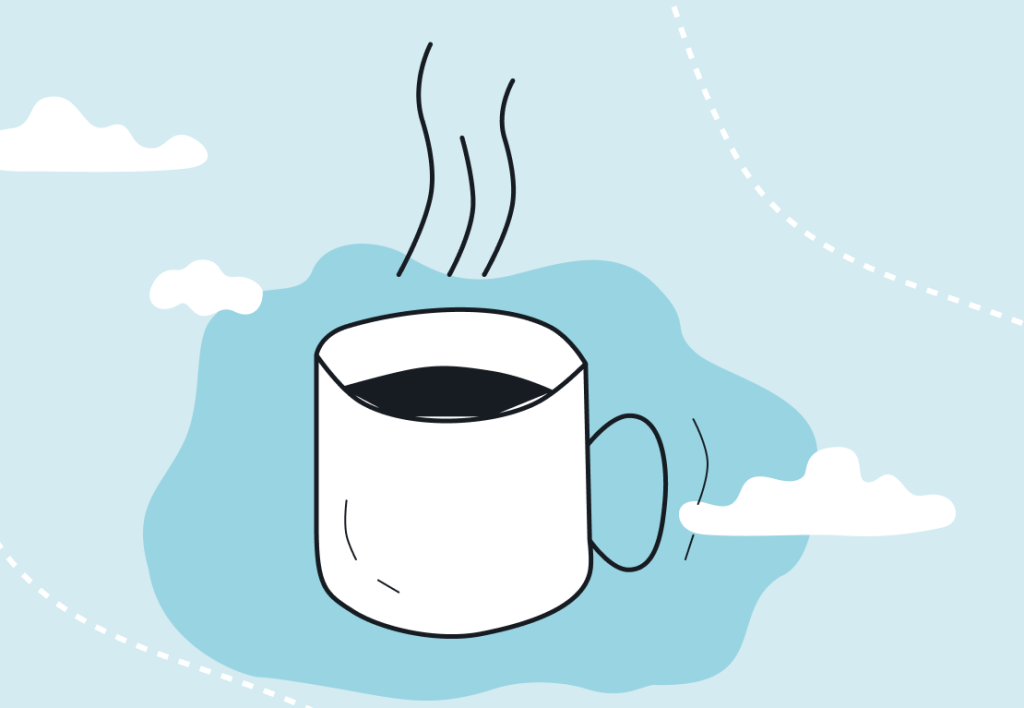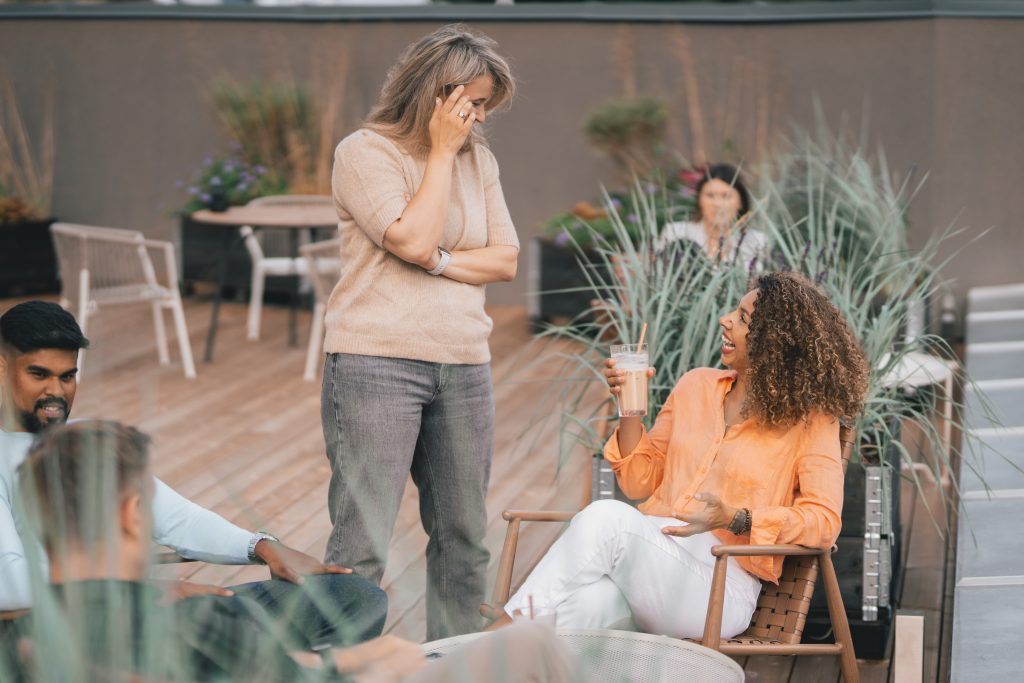The guide to drinking coffee: How to make it more effective (+ fresh statistics)

Wondering how to make coffee more effective? You’re not alone. Although many don’t realize it, there actually is a right way and a wrong way to drink coffee.
If you’re reading this, chances are you’ve already had at least one cup of coffee so far today – according to statistics about adults, at least. One recent study discovered that 73% of American adults drink at least one cup of coffee a day, and 1 in 3 people drink 3-5 cups daily.
Want to get the most out of your time?
Try DeskTime for free!
Try free for 14 days · No credit card required.
By signing up, you agree to our terms and privacy policy.

But how do you make that energy boost last longer? How to avoid coffee jitters and the productivity drop that inevitably follows? In short – is there a way how to drink coffee effectively?
Yes! And we’ll show you how in this article.
But first, let’s take a look at some ethically-sourced statistics on coffee to better understand where we stand. So grab a cup of joe, and let’s dive in.

Statistics: Coffee habits of DeskTime & our clients
At DeskTime, we take coffee seriously. Not only do we have a coffee machine in nearly every room, they’re also equipped with telemetry solutions – a piece of technology that measures consumption, preferences, and coffee quality in order to always serve up the perfect cup at the right time.
So when deciding to write an article about coffee, we knew we had to take it seriously, too. That’s why we surveyed our users over the course of months, asking them about their coffee habits and preferences – to have freshly-ground, perfectly roasted data to serve you.
Here are the results:
A. How many cups of coffee do you drink per day? (323 responses)
- One – 20.8%
- Two to three – 22.2%
- Four or more – 13%
- None – 44%
B. What’s your coffee of choice? (308 responses)
- Black coffee – 44.5%
- With milk – 30.9%
- Decaf – 2.2%
- I don’t drink coffee – 22.4%
C. When do you usually drink coffee? (310 responses)
- In the morning – 38.3%
- Throughout the day – 21.7%
- Only on special occasions – 5.1%
- After meals – 3.2%
- I don’t drink coffee – 31.7%
D. How does coffee impact your work productivity? (166 responses)
- Significantly improves focus and productivity – 32.5%
- No noticeable effect – 12.6%
- Moderately enhances alertness – 12%
- I find it hinders my concentration – 1.9%
- I don’t drink coffee – 41%
A while back, we also tracked our coffee consumption in the office and how it correlates to productivity – check out this article to find out what we discovered.
Facts about coffee and energy
How to drink coffee for energy? We all know that energetic buzz we get from coffee that comes from caffeine (the most heavily used stimulant in the world!), but few people know that the energy boost you get from your cup of java depends on the time of day at which you drink it.

The fact is – the energy you get from the caffeine will last around one hour, and will remain in your system for several hours afterward. Yet, if you drink the same amount of caffeine during times when you don’t need an energy boost, your organism can build a tolerance to caffeine and that will lead to decreased effects.
Coffee is also a diuretic, which means it can dehydrate you if you don’t drink enough water. Meanwhile, it contains antioxidants called quinines that some claim can cut down on the risk of cancer and Parkinson’s.
How to make coffee more effective? With these 6 tips
There are several ways you can alter your coffee consumption to get the maximum energy boost. The human body produces a chemical called “cortisol” which energizes you, yet it doesn’t mix well with coffee. Therefore, drinking coffee at times your body is producing this chemical, can actually make you more tired.
For the best way to drink coffee for energy, try these tips:
1. Drink coffee an hour later than usual
Most coffee drinkers brew a pot as soon as they get out of bed. Instead, try waiting an hour. Your body won’t be producing as much cortisol, and your caffeine will go further. During lunch (around 1:30 pm) is also a great time. This will get you through the rest of your work day without leaving residual caffeine in your body when it’s nighttime.

Make the Most of Your Day!
Unlock your productivity potential with DeskTime. Discover your unique productivity patterns and optimize your workday.
2. Drink coffee with water
Since coffee is a diuretic, it’s important to stay hydrated. And even though one study found that a few cups a day are as hydrating as water, it’s still suggested to have 200ml of water for every cup of coffee you drink.
3. Drink several small cups of coffee periodically
That will give you more energy than one large cup. It was found that small, frequent doses of caffeine (up to a 1/4 cup) every hour will keep you alert and awake throughout the day and it’s one of the best ways how to make coffee more effective.
4. Eat fruits!
Natural sugar from fruits and vegetables is not only good for your energy, but will slow the effects of caffeine to smooth out the energy spike and save you from crashing later.

5. Darker means less
Darker roast coffee may have a bolder flavor, but usually contains less caffeine.
6. Don’t over do it
Like most other things in life, coffee is best (and best for you) when consumed in moderation. Although there are very few risks for moderate coffee drinkers, there can be adverse health effects if you:
- Drink more than 3 cups per day – not only will this lead you to become quickly addicted to coffee, but can increase cholesterol and blood pressure.
- Having heartburn – coffee will increase heartburn and that could lead to a damaged esophagus.
- Have more-than-average anxiety – since your body perceives stimulants similarly to stressors, drinking coffee in excess can lead to greater anxiety.
To summarize, if you’re the anxious type who has a giant light-roast cup of coffee right after waking up, then coffee may be having an adverse effect on you and your productivity and perhaps it’s time to revisit your habits and trade them for more effective ones.
A true coffee connoisseur
If you consider yourself a coffee connoisseur – someone who knows all about the different roasts, can tell the difference between beans and where they come from, perhaps even measures the hardness of water to get the perfect taste – then you should also know HOW and WHEN to drink coffee to truly get the most out of it.
And now you do!
Did you find this article useful? Give it a clap!
Psst! You can clap more than once if you really loved it 🙂